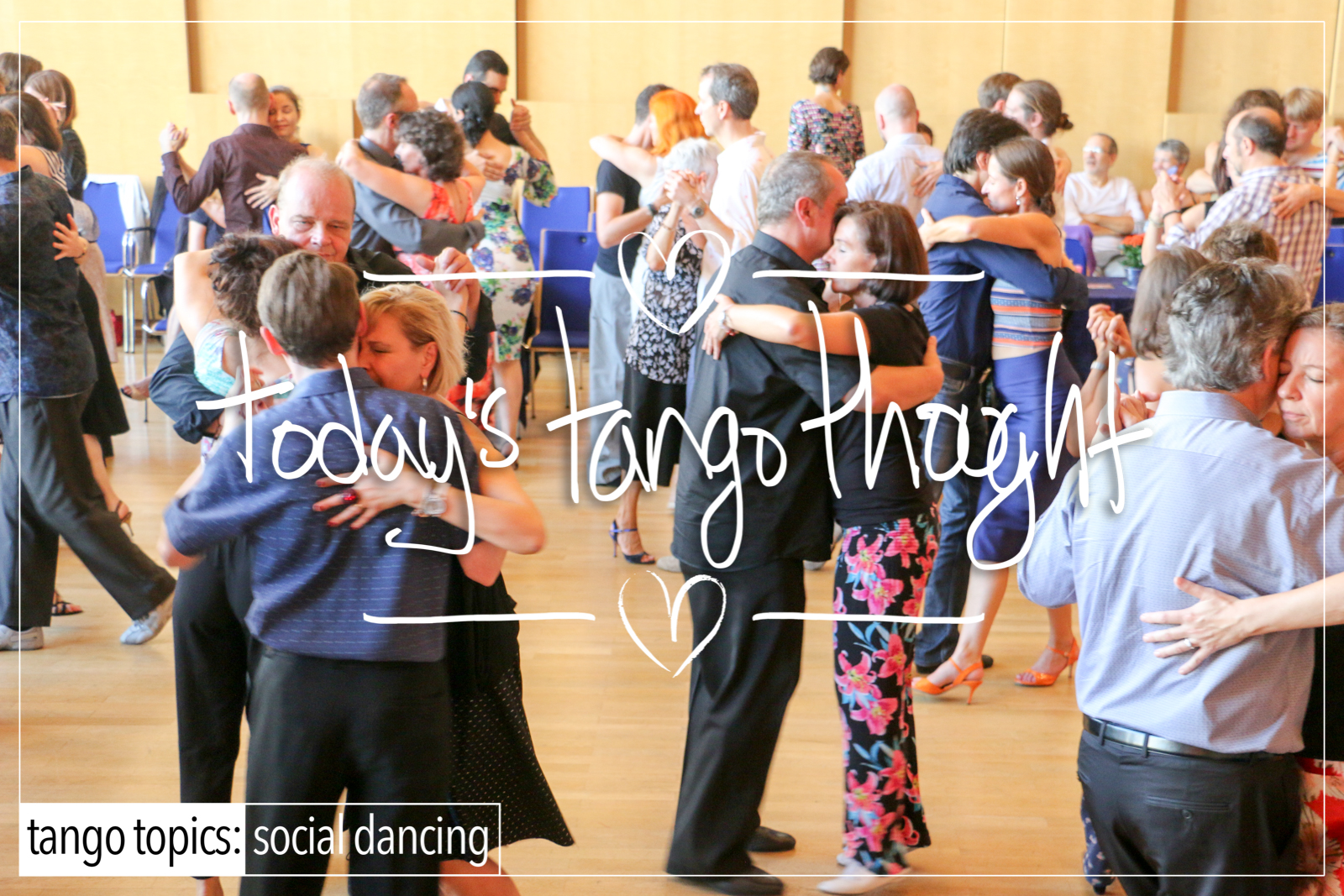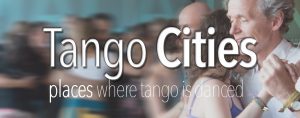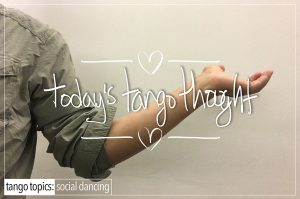Tango is a hard dance to learn from a kinesthetic, didactic, musical, historical, as well as emotional and social perspectives respectively. Probably the single hardest thing to learn aside from the ‘moves’ and music of Tango is the social dynamics and the role it plays in your head emotionally.
When you first start learning the dance, you have ooodles of self-doubt or absolute bravado, and there is no humility in between those two states. You either don’t care about what you don’t know or you’re completely afraid of looking like the village idiot with Tango shoes on! The folks with oodles of self-confidence and self-projected bravado don’t care and they’re generally the folks that end up getting to a certain point with the dance and then not going any further. And then there are the folks with boatloads of self-doubt and hyper-awareness. Those folks will go far, once they get over their self-doubt. The reason ? It’s the hyper-awareness. They recognize that they don’t know everything. Their ego isn’t in their way of acquiring information, they’re too worried about screwing things up to actually do any actual harm to anyone except themselves and their own self-confidence. Those two states almost never change and if anything they tend to meter out and form the basis of someone’s Tango Social Personality.
Now add to the equation: a.) Codigos. b.) The perceived and then the actual Snobbiness of certain dancers better known as the ‘Holier Than Thou’ crowd. c.) The Outliers who only dance with very specific people. d.) The Teacher-Class Dancers. And finally e.) The “Shut Up & Dance” Crowd. f.) Floorcraft. g.) Actual tango music. h.) Line of Dance, Lane of Dance. i.) Outside of North America – Wine and Beer at Milongas. Put all of this in a Milonga environment and those dancers described above tend to accentuate their psychologies, and their pseudo-projections (real or imagined). Pseudo Projections ? You know this. It’s the “She won’t dance with me because I am a ….” or “He won’t dance with me because they’re….” or “They’re always dancing together because they’re…”. It’s all a projection based on supposition, mostly. Do you actually know those things ? No. But you suppose their true and you make up entire worlds to support those beliefs. Have you asked ? Did you get turned down ? If so, did it occur to you that the reason that you didn’t get the dance you wanted is because X didn’t want to dance right at that moment ? Or that X was waiting for Y to ask them ? Or that they’re needing to leave right at that moment…or a host of a million reasons that have absolutely nothing to do with you ? Did that thought not occur to you ? Probably not. That’s a Pseudo Projection.
Enter The Community Tanda.
What is a Community Tanda ? Put simply it’s a Tanda whereby the participants of a Milonga are invited and then wholly encouraged to dance with someone that they have NOT danced with before or at all. It is an opportunity for new dancers to dance with anyone else that is in their minds ‘better than they are’. It is an opportunity for better dancers to try out (if they’re so inclined) new dancers, or someone that just moved to the area or dancers that they danced with a while ago but haven’t danced with since for any number of reasons. It’s an opportunity for long-time dancers to dance with everyone and anyone. It’s an opportunity for everyone to expand their comfort zones, and expand their habits and tastes beyond what they think they know or understand. Sometimes the Community Tanda is referred to as a “Mixer” Tanda. You’ll see them at Festivals, and Local Milongas.
A Community Tanda is where you will ask a new partner to dance one song of the tanda with you, and then have to switch to a new partner on the next song of the tanda, not the next tanda. Sometimes, you’ll rotate to the next person in the line of dance. Sometimes you are free to choose whom you want to dance with next. It depends on how it’s structured. Most times it’s a haphazhard mess to find an available partner, but one that gets sorted out fairly quickly. This way you rotate partners on a much more frequent basis. Typically the tanda is a either a Vals or Tango, and a very recognizable, easy to dance to, with a familiar orchestra and series of songs in the tanda. Almost never will the musical choice be either Milonga or Alternative.
Why Have A Community Tanda ? The simple answer is not so simple but there are a few contributing factors to why some people believe that they’re helpful and quite necessary: 1.) Tango can be quite isolating for new dancers and even for experienced dancers, and yes even for the holier-than-thou. The Community Tanda is a way to break that ice and self-isolation to create a state whereby the dancer can briefly step outside their comfort zones for just a moment and check-in with everyone else and at least dance a little bit. 2.) The reality is that we do get stuck in our ways and only dance with those people that we deem worthy of us so the tanda is a way to extricate ourselves beyond that stuck pattern. 3.) While the primary goal is to dance with the unfamiliar another reason why it’s beneficial is that you’re not committed to a whole tanda but rather just one song. A ‘taste’ or ‘taster’ song if you will. 4.) From an organizational perspective, the Organizer does care (sometimes) that everyone is having fun and/or a good time where for one tanda seemingly everyone is laughing, giggling, and dancing. 5.) The reality is that people go to Milongas, and for a variety of reasons they sit and not by choice. They’d love to dance but for a host of issues that they currently present, dancing with them is problematic, so they ‘sit’. Either they have an acerbic personality, they’re creepy, they play with too much vocabulary (too many Volcadas, Sacadas, Colgadas), they can’t follow the line of dance to save their lives, they’re seemingly crazy on the floor, they’re wholly unstable, they hang, they talk too much, they squeeze too much, they have bad breath, they haven’t showered in a pigs age. Any one, or all, or some not mentioned are the reasons why they’ll sit. 6.) There are those people that feel that Tango’s ‘rules’ are too stringent, and they’d like to break up those rules and be able to dance when they want and not have to deal with all the ‘stuff’ that tango presents. These folks usually come from other dances where dancing a single song is common place, and no one ever says “no”, and everyone is pleasant with each other. So they’d like to replicate that experience of other dances in Argentine Tango. It is for these reasons, and a few more, why some people advocate for a Community Tanda.
The function of the Community Tanda is to drop all of the posturing (real, imagined, or unaware), all of our social issues, and for 9 minutes just have a nice time with everyone and have everyone at the Milonga dancing.
Are there any issues with a Community Tanda ? Timmy, I’m so glad you asked!!! Yes. A host of them. The reality is that because it’s an elective tanda, the outliers will always (nearly) sit out because they don’t want to participate. Some of the better dancers won’t participate because they want to save their bodies from the people that they know will make a bee-line for them and thereby hang, pull, and push, and use them as the proverbial ‘hitching post’ in their embrace. The ‘creepy’ dancers (who by the way, don’t know that they’re being creepy) head directly for the younger dancers that they ordinarily wouldn’t get a chance to dance with. The fact is that none of the issues that were laid out above goes away. None. Fact is that all that Community Tanda does is create an “Open Season” sign on the dancers that only want to dance with who they want to dance with and not be bothered by all this mishigas.
For some people, the idea of a Community Tanda breaks up their routine in a negative way, not a positive one. They were looking forward to uninterrupted time with their regular partners and then the organizer shoved this thing down their collective throats. Uuuuuugh! So not what they wanted or what they paid their 10 or 15 dollars/euros for.
Who benefits from a Community Tanda ? Usually, a teacher benefits because it’s an opportunity to spread their brand whether they’re aware of it or not. The organizer seemingly benefits because they get to see the entire room dancing and moving. It also makes for a great marketing shot if they have the forethought to take a shot of the room dancing at that point. The less than-desirable-dancer benefits (Mind you they don’t know that they’re less than desirable) on multiple levels for obvious reasons. The community-minded dancer benefits because it fits their sense of right and wrong in the universe. It can benefit the holier-than-thou dancer in that it will either confirm or deny their existing beliefs about X, Y, and Z dancer. They can use it as a thermometer, checking to see if X has either improved or degraded. And lastly the Community Tanda benefits those people that have an issue with the codigos of the dance, that for one tanda there is no cabeceo/mirada. The rules of the Milonga (the codigos) go right out the window. Women can invite men to dance (mind you they can do this anyway, it’s called “Mirada” but they seem to forget this). Men can Follow socially and not be stigmatized by their desire to Follow (Mind you no one is stigmatizing them, it’s only a made up projection). Women can lead and no one cares (no one cares now, but again…it’s the projection of the thing).
For some people who don’t necessarily care about who they dance with, they are at the milonga to have fun, and this is one way to have fun. The dancing part, the tango part is supposed to be fun, so, therefore, why not throw caution to the wind and have fun, right ?
The Tango Topics Opinion. A Community Tanda is a good idea. Its intentions are good for a whole host of reasons, and some that are not. 😉 There are pluses and minuses to them, but the intentions are good. But as we all know, as “The Road To Hell Is Paved With Good Intentions…” The pluses are that it fosters a sense of good community involvement, and/or to bring a group of dancers together that wouldn’t ordinarily dance with each other. How could that be bad ? It can’t. The less-than-desirables have already been mentioned.
Yes, the Tanda does break the flow of the evening of dance. Yes, it does feel a bit forced (most of the time). Yes, it does feel a bit cheesy. Yes, you may have to visit the chiropractor the next day to readjust from 3 songs of hanging or pulling or pushing dance partners. Yes, you may have to suffer through bad breath, body odor, and poor posture that you really want nothing to do with for a whole song. Yes, there may be momentary disappointment that you didn’t get another song with that amazing dancer and now they’re dancing with someone else. And yes, you may actually…god forbid actually have FUN instead of something else. Tango is sometimes like a box of chocolates, you never know what you’re going to get. Yes it’s chocolate. And yes you like chocolate, but what’s inside that chocolate is anyone’s guess. And therein lay the surprise.
The next time a Community Tanda (a Mixer Tanda) occurs, perhaps you might want to give it a whirl, you might find something you lost. 😉











